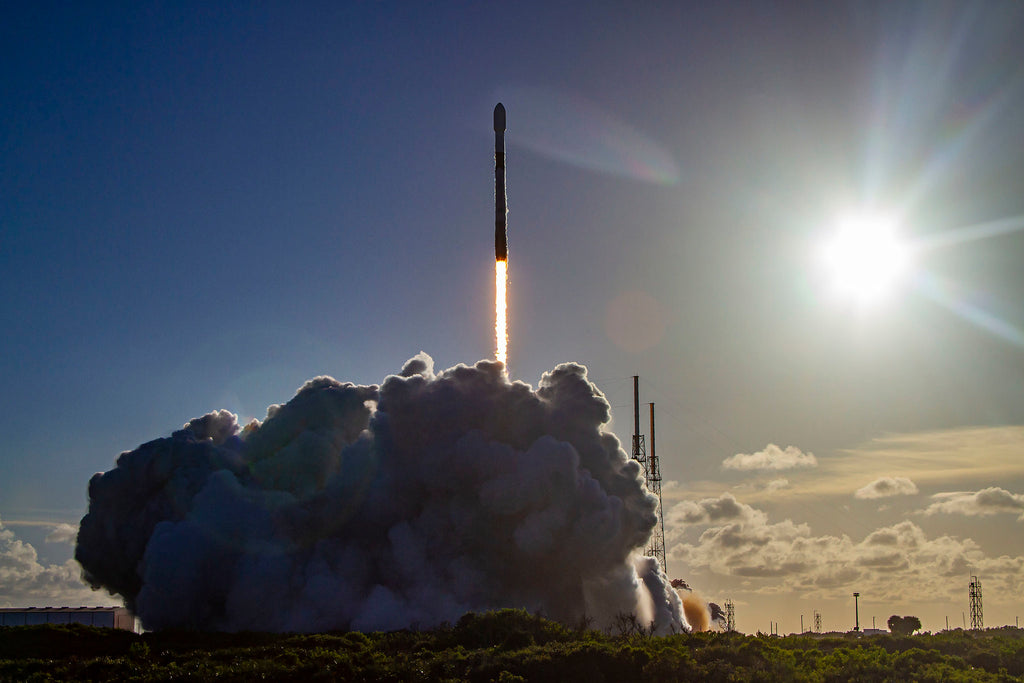On August 4, SpaceX launched South Korea's first Moon mission into a ballistic lunar transfer orbit. The Korea Pathfinder Lunar Orbiter (KPLO) was launched by a previously-flown Falcon 9 rocket on Thursday at 7:08 p.m. ET from Space Launch Complex 40 (SLC-40) at Cape Canaveral Space Force Station in Florida. The KPLO mission is managed by the Korea Aerospace Research Institute (KARI). The KPLO lunar orbiter spacecraft is named "Danuri," which is a play on the Korean words "moon" and "enjoy."
This was the sixth launch and landing of the veteran Falcon 9 first-stage booster, identified as B1052, which previously supported the launch of Saudi Arabia's Arabsat-6A satellite, the STP-2 mission, the COSMO-SkyMed Second Generation FM2 satellite, and two Starlink missions. Approximately eight minutes after liftoff, the booster returned from space and landed on the 'Just Read the Instructions' autonomous spaceport drone ship that was situated in the Atlantic Ocean. It marked the 134th landing of an orbital-class rocket and the 110th reflight of a booster.Liftoff! pic.twitter.com/dAQGvpcOCX
— SpaceX (@SpaceX) August 4, 2022
Watch Falcon 9 launch KPLO to orbit → https://t.co/ypqkncgNO9 https://t.co/xVSjw5a0TK
— SpaceX (@SpaceX) August 4, 2022
The rocket's upper-stage propelled the KPLO spacecraft into a Trans Lunar Injection. KPLO Danuri is currently on trajectory with its onboard engines; It will go into a ballistic lunar transfer orbit, which uses a gravity assist by the sun to make the journey to the moon more fuel-efficient. It will first fly toward the sun then loop back toward the moon. The estimated arrival date at the moon is on December 16.
Deployment of KPLO confirmed pic.twitter.com/ctco6Qsmdi
— SpaceX (@SpaceX) August 4, 2022
When the 1,495-pound Danuri spacecraft arrives at the moon it will insert itself into an orbit with an altitude of 62-miles above the moon. The spacecraft is designed to test technologies that will research the lunar surface's terrain from orbit. KPLO Danuri is equipped with 6 science instruments: a magnetometer, a gamma-ray spectrometer, a communications system and three cameras. One of the cameras is designed by NASA, called 'ShadowCam,' that is sensitive enough to analyze the moon’s shadowed craters that never receive sunlight. NASA believes these dark craters may contain abundant water ice. The research will be useful for humanity’s return to the lunar surface.
 All Featured Images Source: SpaceX
All Featured Images Source: SpaceX








